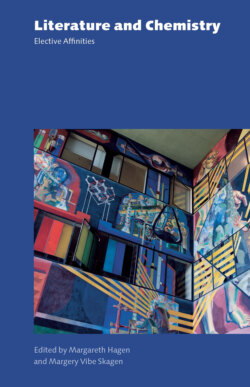Читать книгу Literature and Chemistry - Группа авторов - Страница 25
На сайте Литреса книга снята с продажи.
INTRODUCTION
ОглавлениеFor Italian and international readers, Primo Levi’s name is principally linked to his testimonial works of witness and description of the Holocaust. In Italy, his other texts were not appreciated by a larger public until the mid-1970s, and the international audience still perceives him primarily as a Holocaust author.1 After the enormous impact of his two testimonies of the Shoah, If
Primo Levi.
This is a Man (1947) and The Truce (1963), Levi wrote his highly original autobiography The Periodic Table (1975). Using chemical elements as metaphors, the book casts new light on his testimony of the Nazi extermination camps and clears the way for a larger and perhaps more diverse readership, increasing his renommé as a scientific writer. Il sistema periodico is a collection of twenty-one more or less autobiographical short stories dedicated to and inspired by twenty-one chemical elements. With its blend of personal memoir, chemistry, etymology, and ethics, it has been widely acclaimed as a masterpiece by an international and national readership.2
Primo Levi’s extraordinary prose is the fruit of his three fundamental life experiences or identities: his having witnessed the Holocaust and giving testimony of it; his training and work as a chemist; and his authoring of books dedicated to the awareness of the materiality of our world and the potential for poetry in concrete phenomena. The blending of these three identities results in literary texts where pathos, even when recalling horrendous events, is played down in order to offer room for an intensely lucid and precise description and analysis of what it means to be human, and also of the chemical material from which we are all made. As Robert S. C. Gordon shows in the previous chapter of the present book, the striking objective style of Levi’s texts is rooted in his scientific ideal of clarity and in his chemical training and sensorium.3 Chemistry has a constant presence in Levi’s life journey: in his first childhood experiments, in his university studies, in the chemical laboratory of IG Farben in Monowitz (part of Auschwitz III) where he was assigned to work and was thus able to survive, and later, in his professional and intellectual life.
In Primo Levi’s prose the interaction between the discourses of science and autobiography challenges conventional divisions between scientific and humanistic fields. In the following pages I focus on the particular amalgam of the autobiographical genre and the exposition of chemistry, as it appears in Levi’s Periodic Table. After briefly presenting the importance of chemistry for Levi’s writing – and here I use some of Levi’s own words – I assess how the tools and ethos of chemistry have structured his autobiography. As a way of drawing out the specific characteristics of Levi’s work, I will compare his novel with another autobiography both informed by and dedicated to chemistry: Oliver Sacks’ Uncle Tungsten: Memories of a Chemical Boyhood (2001).
